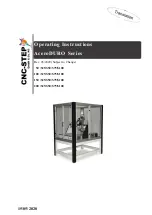
3Com Switch 8800 Configuration Guide
Chapter 29 PIM-SM Configuration
29-1
Chapter 29 PIM-SM Configuration
29.1 PIM-SM Overview
29.1.1 Introduction to PIM-SM
PIM-SM (Protocol Independent Multicast, Sparse Mode) belongs to sparse mode
multicast routing protocols. PIM-SM is mainly applicable to large-scale networks with
broad scope in which group members are relatively sparse.
Different from the flood & prune principle of the dense mode, PIM-SM assumes that all
hosts do not need to receive multicast packets, unless there is an explicit request for
the packets.
PIM-SM uses the RP (Rendezvous Point) and the BSR (Bootstrap Router) to advertise
multicast information to all PIM-SM routers and uses the join/prune information of the
router to build the RP-rooted shared tree (RPT), thereby reducing the bandwidth
occupied by data packets and control packets and reducing the process overhead of
the router. Multicast data flows along the shared tree to the network segments the
multicast group members are on. When the data traffic is sufficient, the multicast data
flow can switch over to the SPT (Shortest Path Tree) rooted on the source to reduce
network delay. PIM-SM does not depend on the specified unicast routing protocol but
uses the present unicast routing table to perform the RPF check.
Note that, the creation and interaction of the RPs and BSRs are implemented through
periodical RP advertisements and BSR Bootstrap packets respectively. You can view
the packets in the following debugging information:
<SW8800> debugging pim sm send ?
assert PIM-SM assertion packet sending debugging functions
bootstrap PIM-SM bootstrap packet sending debugging functions
crpadv PIM-SM RP candidate advertisement sending debugging functions
jp PIM-SM join/prune packet sending debugging functions
reg PIM-SM registration packet sending debugging functions
regstop PIM-SM registration-stop packet sending debugging functions
To make PIM-SM operate, you must configure candidate RPs and BSRs. BSRs collect
and broadcast the information from candidate RPs.
29.1.2 PIM-SM Working Principle
The PIM-SM working process is as follows: neighbor discovery, building the RP-rooted
shared tree (RPT), multicast source registration and SPT switchover etc. The neighbor
discovery mechanism is the same as that of PIM-DM, which will not be described any
more.















































